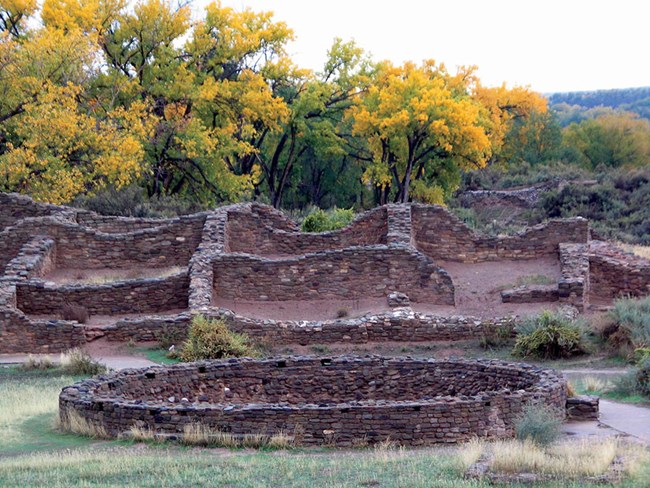
NPS / SCPN
Aztec Ruins National Monument encompasses 321 acres within the city of Aztec in the Animas Valley of northwestern New Mexico. It was established as a monument in 1923 to protect the remains of an Ancestral Puebloan farming community.
Despite its small size, Aztec Ruins NM has an usually high level of biodiversity, with 11 types of vegetation communities (including riparian, pinyon-juniper woodlands, and grasslands), 70 bird species, 28 mammal species (including seven species of bats), three amphibian species and 10 reptile species. The Animas River, which forms the eastern border of the park, provides a perennial source of water.
Monitored Here
Species Lists
Select a Park:
Select a Species Category (optional):
Visit NPSpecies for more comprehensive information and advanced search capability. Have a suggestion or comment on this list? Let us know.
Life Zones
Aztec Ruins NM ranges in elevation from 5,592 to 5,786 feet (1,716-1,764 m) and lies within the Semi-desert Grassland/Shrub Steppe and Pinyon-Juniper Woodland life zones. The monument experiences an average annual precipitation of 9.9 inches (252 mm).

Climate Summary Chart
Charts are an effective way to summarize and graphically represent climate variables. The following chart is based on the diagrams developed for vegetation studies by Walter and Lieth in 1967. Visit our climate page for more information.

Reports & Publications
Inventories are point-in-time surveys that help us learn about the resources in our parks. Information obtained through the Southern Colorado Plateau Network’s inventories of park resources helped to establish a base level of data, which has served as a starting point for our natural resource monitoring.
Source: NPS DataStore Saved Search 3515 (results presented are a subset). To search for additional information, visit the NPS DataStore.
Source: NPS DataStore Saved Search 3471 (results presented are a subset). To search for additional information, visit the NPS DataStore.
Source: NPS DataStore Saved Search 3280 (results presented are a subset). To search for additional information, visit the NPS DataStore.
Last updated: December 4, 2023
